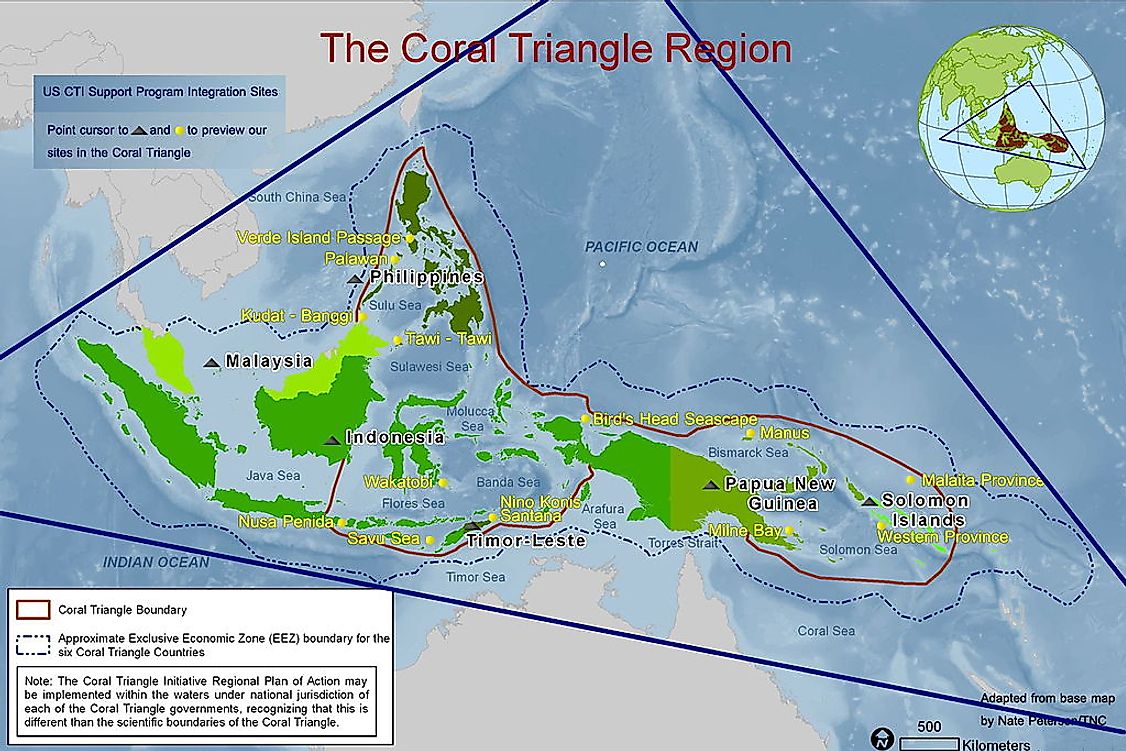The Importance of Conserving The Coral Triangle

What Is The Coral Triangle?
The Coral Triangle is located among the islands of Timor-Leste, Papua New Guinea, Indonesia, Solomon, and Malaysia. It covers 2.2 million square miles and is comprised of 2 ecoregions: the Indonesian-Philippines region and the Far Southwestern Pacific region. Within each of these regions, 500 species of coral exist together to create the reefs below. This ecological area is teeming with biodiversity that provides livelihood, through fishing and tourism industries, to more than 120 million individuals.
Threats To The Biodiversity Of The Coral Triangle
As previously mentioned, the Coral Triangle is home to a wide range of biodiversity although it only takes up 1.6% of global ocean areas. In fact, it provides a habitat for approximately 76% of the world’s coral species, 52% of Indo-Pacific reef fish, and 37% of the world’s entire global reef fish population. These percentages represent more than 6,000 types of fish species and 6 of only 7 marine turtle species. Additionally, it is home to the largest area of mangrove forests in the world. For the local economy, the fishing industry exports $1 billion worth of tuna on an annual basis.
Unfortunately, this biodiversity is under increasing threat. The area surrounding the triangle is responsible for some of the biggest threats to the triangle which include: economic expansion, population growth, unsustainable tourism, and international trade. The growing population has resulted in increased coastal development, causing erosion and pollution to the surrounding marine waters. The fishing industry has been increasing in response to growing worldwide demand, leading to overfishing and the depletion of local fish populations. Global climate change has also been threatening the biodiversity here with high levels of acid in the water, warming temperatures, and rising sea levels. Reef bleaching has also been an increasing threat to the coral reefs within this area.
Importance Of Conservation
The Coral Triangle is often referred to as the Amazon of the Seas as it is one of the most valuable marine ecosystems in the world. As such, it is considered an urgent conservation priority by several organizations, including the World Wide Fund for Nature. Conserving this marine area is important to its future. Researchers believe that if conservation efforts are not undertaken soon, the Coral Triangle will be destroyed by the year 2100. Not only would this be detrimental to plant and animal life, but also to humans. Estimates suggest that if this happens, around 100 million individuals will lose their main source of revenue and the ability of the region to provide food to humans will decrease by 80%.
Conservation efforts focus on creating sustainable tourism, fishing, and aquaculture opportunities for the local population. Additionally, the countries surrounding the Coral Triangle entered an agreement in 2009 called the Coral Triangle Initiative on Coral Reefs, Fisheries, and Food Security. The objective behind the treaty is to increase conservation efforts and create international action plans. Some of the goals of this conservation treaty for 2020 include: a minimum of 10% of the Coral Triangle should be sustainably managed, a reduction in the environmental footprint of fisheries and tourism, and an increased level of food security for local communities.











